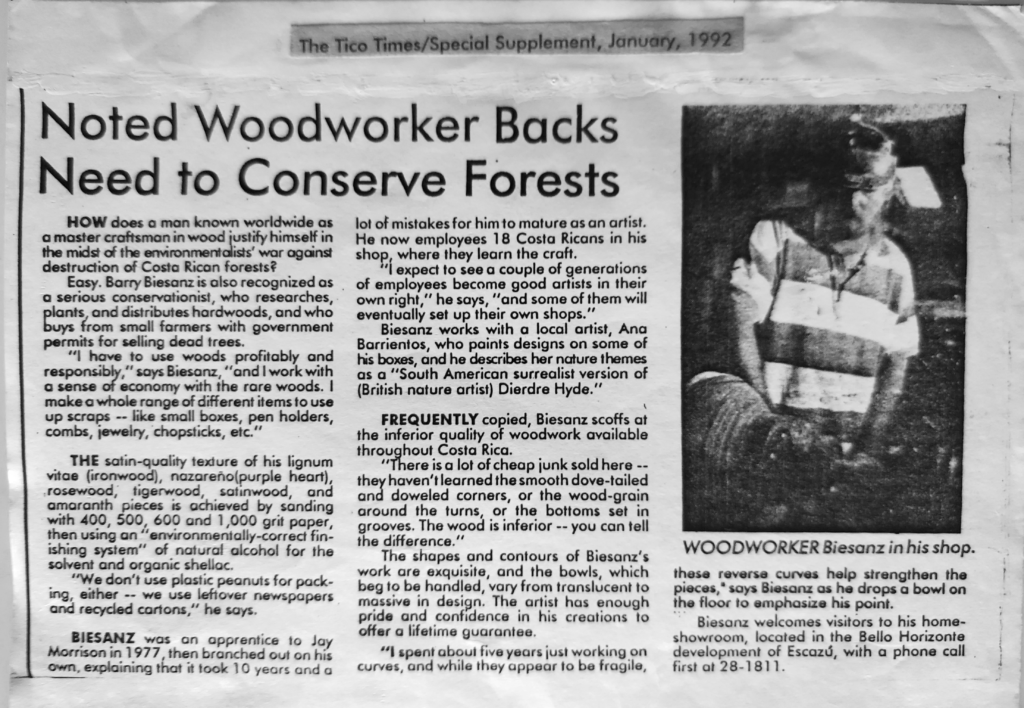Noted Woodworker Backs Need to Conserve Forests

Tico Times Special Supplement January 1992
Noted Woodworker Backs Need to Conserve Forests
How does a man known worldwide as a master craftsman in wood justify himself ij the midst of the envionmentalists war agains destruction of Costa Rican forests?
Easy. Barry Biesanz is also recognized as a serious conservationist, who researches, plants, and distributes hardwoods, and who buys from small farmers with government permits for selling dead trees.
“I have to use woods profitabluy and responsibly,” says Biesanz, “and I work with a sense of economy with the rare woods. I makle a whole range of different items to use up scraps — like small bopxes, pen holders, combs, jewelry, chopsticks, etc.”
The satin-quality texture od his lignum vitae (ironwood), nazareno (purple heart) rosewood, tigerwood, satinwood, and amaranth pieces is achieved by sanding with 400,500, 600, and 1,000 grit paper, then using an “environmentall-correct finishing system” of natural alcohol for the solvent and organic shallac.
“We don’t use plastic peanuts fo rpacking, either – we use leftover newspapes and recycled cartons,” he says.
Biesanz was an apprentice to Jay Morrison in 1977, then branched out on his own, explaining that it took 10 years and a lot of mistakes for him to mature as an artist. He now emplyes 18 Costa Ricans in his shop, where they learn the craft.
I expect to see a couple of generations of employees become good artists in their own right,” he says, “and some of them will eventually set up their own shops.”
Biesanz works with a local artist, Ana Barrientos, who paints designs on some of his boxes, and he describes her nature themes as “South American surrealist version of (British nature artist) Dierdre Hyde.
Frequently copied, Biesanz scoffs at the inferior quality of woodwork available throughout Costa Rica.
“There is a lot of cheap junk sold here — they haven’t learned the smooth dovetail and dowelled corners, or the wood grain around the turns, or the bottoms set in grooves. The wood is inferior – you can tell the difference.”
The shapes and contours of Biesanz’ work are exquisite, and the bowls, which beg to be handled, vary from translucent to massive in design. The artists has enough pride and confidence in his creations to offer a lifetime guarantee.
“I spent about five years working on curves, and while they appear to be fragile, these reverse curves help strengthen the pieces,” says Biesanz as he drops a bowl on the floor to reinforce his point.
Biesanz welcomes visitors at his showroom, located in the Bello Horizonte development of Escazú, with a phone call first to 28-18-11.
